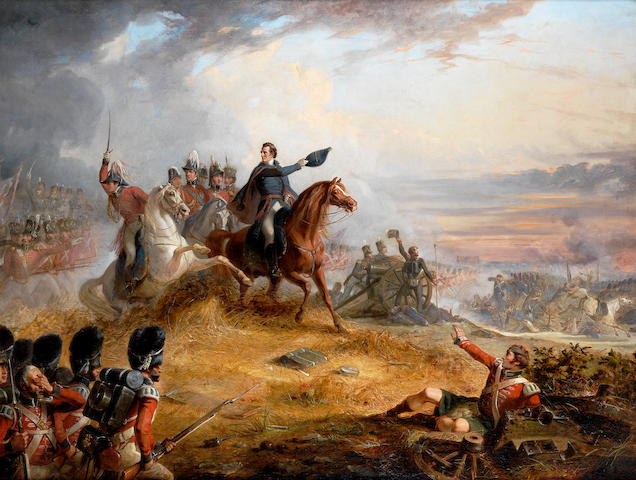
Battle of Waterloo 1815 by Thomas Jones Barker. Source: Wikimedia.
The defeat of Napoleon at Waterloo in 1815 after 22 years of conflict with France was achieved at great cost. In that one day around 55,000 men from both sides were killed or wounded, and about 2000 amputations performed, usually without any form of anaesthetic. Wellington wrote afterwards, ’My heart is broken by the terrible loss I have sustained among old friends and companions and my poor soldiers’. Six veterans of the Napoleonic Wars are buried in the cemetery but only three are known to have been involved in the battle of Waterloo. One was John Deakin, who died in 1856 aged 66, and who served in the 2nd Cavalry Brigade, Inniskilling Dragoons, ‘for upward of thirty years’ according to the memorial inscription. One source suggests that he enlisted in 1803, when he was about 11, and was promoted to trumpeter while still a teenager. Later, as Trumpet Major, he would have been in charge of the training and deployment of trumpeters who were important, not just for ceremonial and signal duties, but also for communication in battle. He received a lance wound at Waterloo and, after he was discharged in his 40s, went on to serve as Trumpet Major for 18 years in the 1st West Yorkshire Yeomanry Cavalry, a volunteer regiment used to support civil order. He married and had at least nine children, and was buried in plot E2 131, Anglican section. The headstone is now lost. The headstone of Thomas Sands, another Waterloo veteran, can be seen to the left of the Montague Street entrance, where it was moved in 1980.



